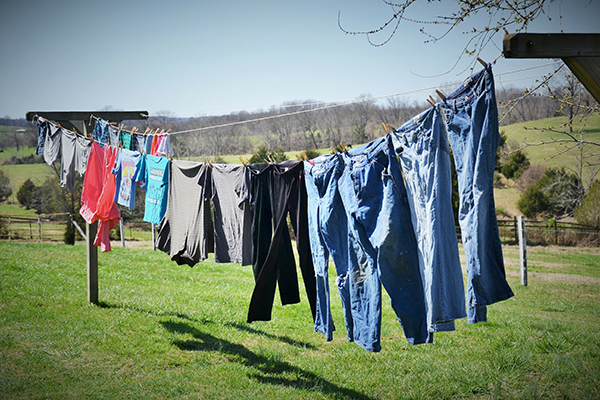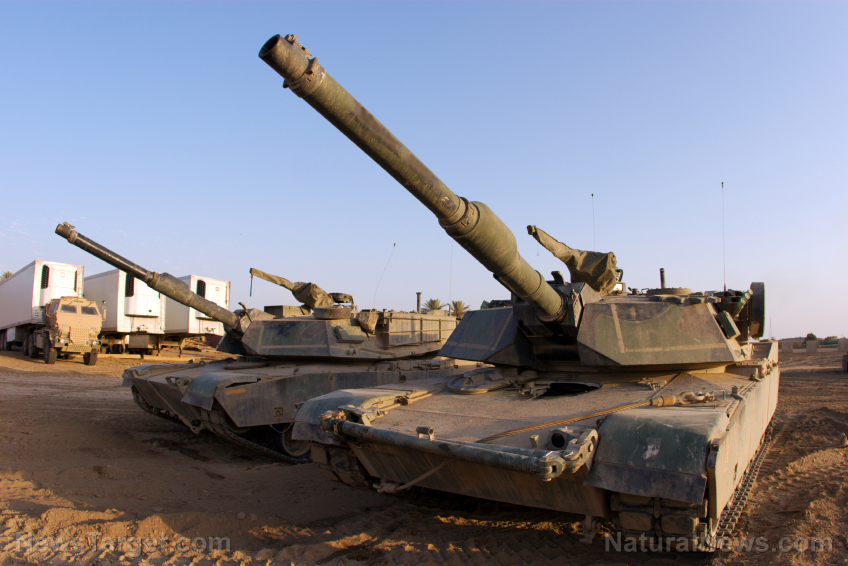 Parler
Parler Gab
Gab
- Bandanas are ultra-versatile. They can be used as slings, smoke filters, makeshift ropes, water filters or even fire starters when needed.
- Belts can be used as tourniquets, splint stabilizers, knife sharpeners or straps for hauling supplies.
- Jackets and hoodies double as survival gear. Turn them into makeshift bags, insulation layers, emergency bivy sacks or even water carriers.
- Denim jeans can be lifesavers. Cut them into cordage, knee pads or emergency sandals if your shoes get damaged.
- Wool and synthetic fabrics have hidden uses. Wool retains heat when wet and can be unraveled for cordage, while stretchy fabrics (like sports bras) work as bandages or tool holders. In a crisis, your clothes aren’t just for warmth: They’re survival tools. Knowing how to repurpose them can keep you alive when resources are scarce.
Bandanas
A simple bandana is one of the most versatile items you can carry. Folded into a triangle, it becomes a sling for an injured arm. Tied around the face, it filters dust or smoke. Soaked in water, it cools your skin in extreme heat. Need a rope? Cut a bandana into strips and braid them together. If you need a water filter, layer it with sand and charcoal to strain debris. In a pinch, it can even be used as a fire starter when combined with a spark or flame.Belts
A sturdy belt isn’t just for holding up pants. It can be used as a tourniquet to stop severe bleeding, a strap for hauling firewood or a splint stabilizer for broken limbs. Leather belts can even sharpen knives in the field, keeping essential tools ready for use.Gloves
Gloves do more than keep hands warm. They prevent blisters, burns and cuts when handling rough materials. A durable pair, like insulated leather gloves, allows you to move hot logs, cook over a fire or dig without injury. Keeping a spare pair in your emergency bag ensures you’re always prepared.Jackets and hoodies
A hooded jacket can become a makeshift bag for carrying food or kindling. Fill the sleeves with dry leaves for extra insulation or use a waterproof jacket as an emergency bivy sack in wet conditions. If you don't have a bucket, use a hoodie lined with plastic to scoop and carry water from a creek.Jeans
Denim is durable, making jeans ideal for improvised cordage if they don’t contain too much stretchy spandex. Cut-off pockets can be repurposed as knee pads or shin guards, while layered denim can even be fashioned into emergency sandals if shoes are lost or damaged.Rain ponchos and PVC clothing
A rain poncho isn’t just for staying dry. It can be a tarp shelter, a rainwater collector or an emergency groundsheet. With some rope and creativity, it can even become a makeshift blanket in freezing conditions.Scarves and headcovers
A scarf is essentially a large, flexible piece of fabric with endless uses. It can be a sun shield, a water filter or even a baby carrier. Brightly colored scarves make excellent signal flags for rescuers, while small strips tied to trees can mark a trail in dense wilderness.Socks
Extra socks keep feet dry and prevent blisters, but they can also be turned into heating pads (filled with rice and warmed near a fire) or water filters (stuffed with sand and charcoal). In extreme heat, soaking clean socks in cold water and wrapping them around your neck helps regulate body temperature.Sports bras and compression gear
The stretchy, durable fabric of sports bras and compression wear makes them perfect for improvised bandages or gear holsters. Their snug fit and elasticity mean they can secure splints or even hold small survival tools in place.T-shirts
Cotton T-shirts are incredibly adaptable. They can be shredded for tinder, cut into strips and tied as tourniquets or used as water filters. Brightly colored shirts are great as signal flags, while torn sleeves can serve as emergency toilet paper or bandages.Underwear
Clean underwear can be repurposed as slings, water filters or emergency bandages. Synthetic materials dry quickly and can even be knotted into water-resistant pouches for small items.Wool sweaters
Wool retains heat even when wet and is naturally fire-resistant. Unraveled wool fibers can be used as cordage for tying gear or repairing shelters. In freezing conditions, a wool sweater could mean the difference between hypothermia and survival. In an emergency, clothing isn’t just about comfort; it’s a resource. Knowing how to repurpose everyday garments can mean the difference between struggle and survival. Visit Health Ranger Store and Brighteon Store to find more prepping products for your prepping needs. You can also check out Survival.news for more tips on how to survive when SHTF. Watch this clip about UHMWPE Braided Survival Cord and Bug Spray, two must-have items for your prepping stockpile. This video is from the Health Ranger Store channel on Brighteon.com.More related stories:
The minimalist prepper: How owning less can prepare you for more when disaster strikes. Bug-out essential: Why a portable fire pit belongs in your SHTF kit. Health Ranger Report: Marjory Wildcraft explains why off-grid survival skills are important. Urban resilience: Tom Brown’s guide to thriving in the concrete jungle. Sources include: AskAPrepper.com GubbaHomestead.com SunnySports.com Brighteon.comThe surprising benefits of worrying the right way (and how to do it)
By Zoey Sky // Share
Ginger’s hidden power: A natural weapon against autoimmune inflammation
By Ava Grace // Share
Emergency flashlight: Compact light to help you navigate life’s unexpected moments
By HRS Editors // Share
How parallel economies can help you survive an economic crisis
By Zoey Sky // Share
Governments continue to obscure COVID-19 vaccine data amid rising concerns over excess deaths
By patricklewis // Share
Tech giant Microsoft backs EXTINCTION with its support of carbon capture programs
By ramontomeydw // Share
Germany to resume arms exports to Israel despite repeated ceasefire violations
By isabelle // Share










